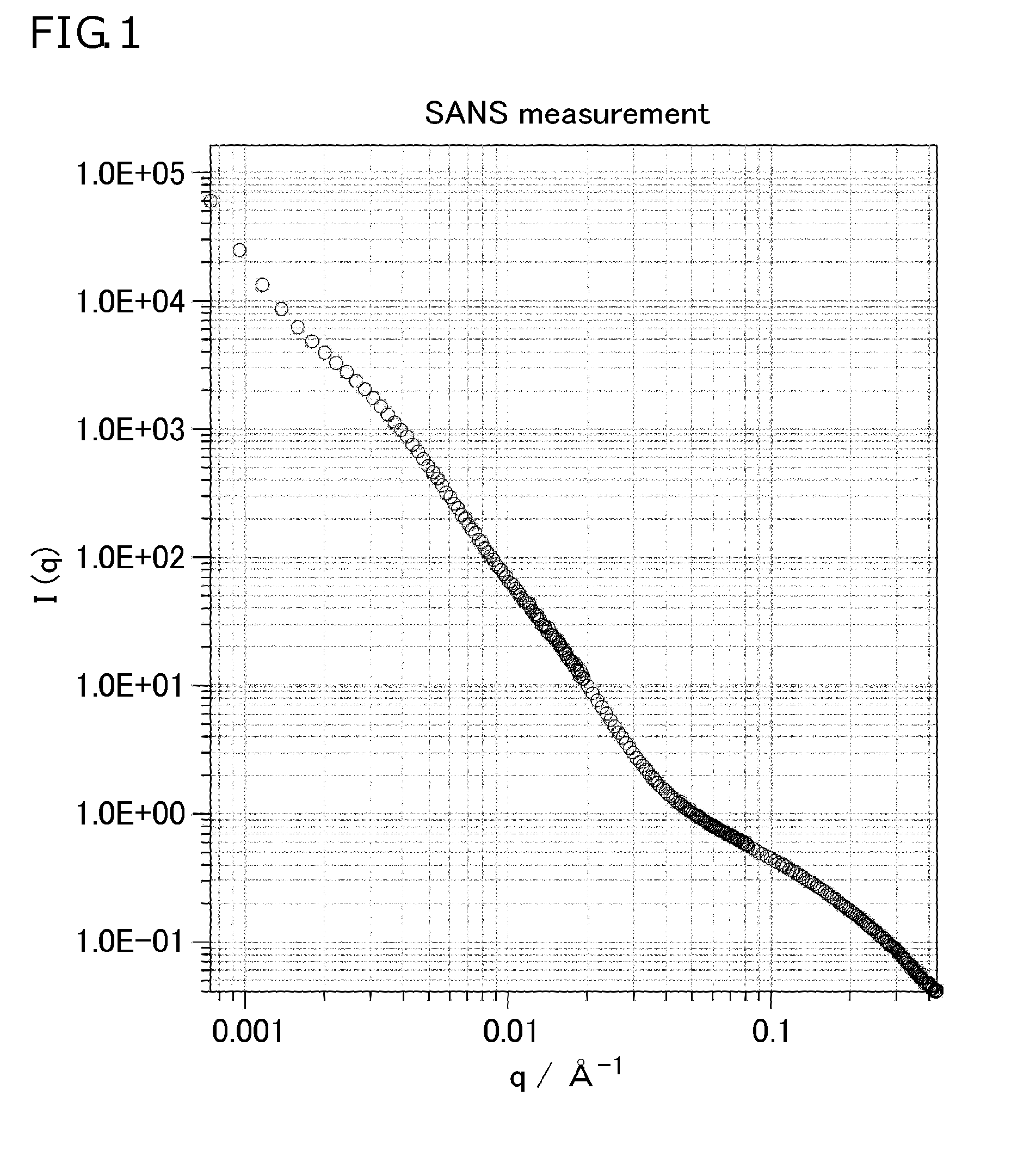Method for evaluating energy loss, chipping resistance and abrasion resistance of polymeric material
a polymer material and energy loss technology, applied in the field of polymer material energy loss, chipping resistance and abrasion resistance evaluation, can solve the problems of insufficient measurement accuracy, inability to evaluate differences with good reproducibility, and general inability to efficiently evaluate chipping resistance, so as to achieve high measurement accuracy, reduce measurement errors, and energy loss
- Summary
- Abstract
- Description
- Claims
- Application Information
AI Technical Summary
Benefits of technology
Problems solved by technology
Method used
Image
Examples
examples
[0112]The present invention is now more specifically described with reference to examples but is not limited thereto.
[0113]The chemical agents used in Examples and Comparative Examples are listed below.
(Chemical Agents Used)
[0114]Cyclohexane: available from Kanto Chemical Co., Inc.
[0115]Pyrrolidine: available from Kanto Chemical Co., Inc.
[0116]Divinylbenzene: available from Sigma-Aldrich Japan K.K.
[0117]1.6 M n-butyllithium in hexane: available from Kanto Chemical Co., Inc.
[0118]Isopropanol: available from Kanto Chemical Co., Inc.
[0119]Styrene: available from Kanto Chemical Co., Inc.
[0120]Butadiene: available from Takachiho Chemical Industrial Co., Ltd.
[0121]Tetramethylethylenediamine: available from Kanto Chemical Co., Inc.
[0122]Modifier: 3-(N,N-dimethylaminopropyl)trimethoxysilane available from AZmax. Co.
[0123]NR: RSS#3
[0124]Carbon black: N220 available from Cabot Corporation
[0125]Aromatic oil: Diana Process AH-24 available from Idemitsu Kosan Co., Ltd.
[0126]Stearic acid: stearic...
examples 1-1 to 1-6
[0139]A plate-like sample (molded product) having a thickness of about 1 mm was swollen to equilibrium in deuterated toluene, and attached to a sample holder. The sample was then irradiated with neutrons at room temperature. Absolute scattering intensity curves obtained by measuring the sample at distances of 2.5 m, 10 m, and 10 m with a focusing lens from the detector were combined by least squares. These three curves were combined in the following manner: the scattering intensity curve obtained by measuring the sample at a distance of 2.5 m from the detector was fixed, and the scattering intensity curves obtained by measuring the sample at a distance of 10 m with and without a focusing lens from the detector were shifted. The thus obtained scattering intensity curve I(q) was curve fitted with equations 1-2 and 1-3, and a fitting parameter (correlation length in the range of 1 nm to 100 μm (distance between crosslinking points in the polymer)) was then determined by least squares. ...
examples 2-1 to 2-6
[0149]The scattering intensity curve I(q) obtained by the SANS measurement method was curve fitted with equations 2-2 and 2-3, and a fitting parameter Ξc (correlation length ξ in the range of 1 nm to 100 μm (size of a heterogeneous network structure in the polymer)) was then determined by least squares. The obtained value of correlation length Ξc was expressed as an index, with the value determined in Example 2-1 as 100. A lower index value indicates higher chipping resistance.
2-2. Chipping Test on the Road
PUM
| Property | Measurement | Unit |
|---|---|---|
| correlation length | aaaaa | aaaaa |
| correlation length Ξc | aaaaa | aaaaa |
| energy loss | aaaaa | aaaaa |
Abstract
Description
Claims
Application Information
 Login to View More
Login to View More - R&D
- Intellectual Property
- Life Sciences
- Materials
- Tech Scout
- Unparalleled Data Quality
- Higher Quality Content
- 60% Fewer Hallucinations
Browse by: Latest US Patents, China's latest patents, Technical Efficacy Thesaurus, Application Domain, Technology Topic, Popular Technical Reports.
© 2025 PatSnap. All rights reserved.Legal|Privacy policy|Modern Slavery Act Transparency Statement|Sitemap|About US| Contact US: help@patsnap.com



